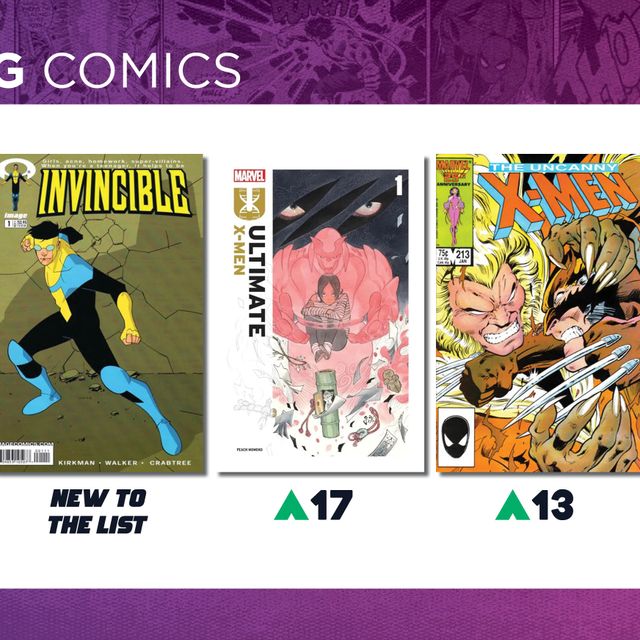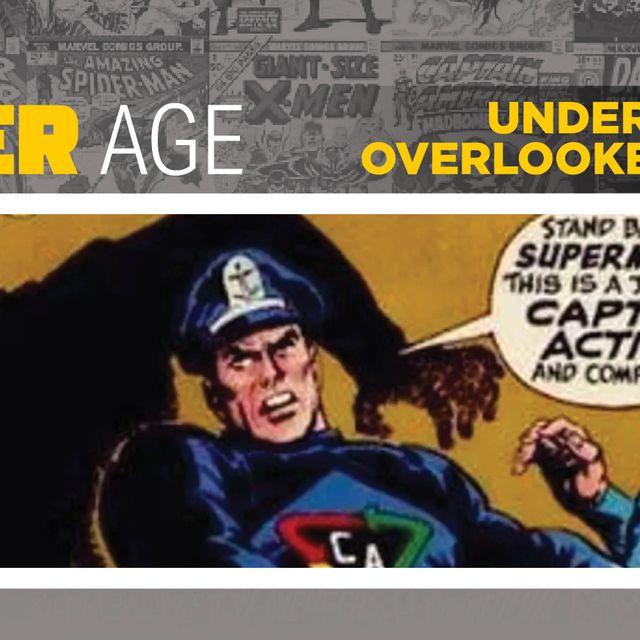by Elisabeth@TFAW
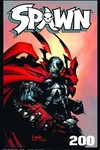 Todd McFarlane burst onto the comic book scene in the mid 1980s at Marvel, parlaying his soaring popularity as an artist and writer into a new Spider-Man series titled, well, Spider-Man. When Spider-Man #1 sold 2.5 million copies in 1990, the industry had rarely seen such an uproar–until 1992, when McFarlane left Marvel and founded Image Comics with Jim Lee, Rob Liefeld, Marc Silvestri, Erik Larsen, Jim Valentino, and Whilce Portacio.
Todd McFarlane burst onto the comic book scene in the mid 1980s at Marvel, parlaying his soaring popularity as an artist and writer into a new Spider-Man series titled, well, Spider-Man. When Spider-Man #1 sold 2.5 million copies in 1990, the industry had rarely seen such an uproar–until 1992, when McFarlane left Marvel and founded Image Comics with Jim Lee, Rob Liefeld, Marc Silvestri, Erik Larsen, Jim Valentino, and Whilce Portacio.
There, McFarlane unveiled his creator-owned book Spawn, the debut issue of which sold 1.7 million copies–a record for an independent comic book that still stands today. Now the President of Image Comics, McFarlane has expanded into toys, film, animation, and games, and as part of Image Month, he's told us all about it:
TFAW.com: Tell us what it was like founding Image Comics 18 years ago!
Todd McFarlane: Wow, 18 years–is that right? Wow, I haven't done the math for awhile. You know what, I have a daughter who is 18 and she was born right when we started, so she's always been the barometer. So I usually have to ask my daughter, "How old are you? Oh. Okay." She's in college now, and the other guys are like, "What? The first Image baby is in college?!? Cool!"
If we harken back to those times, comic books were really at the peak in terms of their sales, at that point. A lot of the books that we were working on, the guys that ended up moving over to Image, we were doing a bunch of the top books at Marvel, at that time. X-Men, Spider-Man, Deadpool, and stuff. It was sort of interesting, because some people would ask, "Are you afraid or anxious about going it on your own?" But at least for me–and again, you may get a different answer from the other partners–for me, not really, because I knew that we had enough of a fan base on the projects we were doing, that if I put myself in the position where I quit what I was doing and moved it someplace else, that if they wanted to see my artwork, they were gonna have to at least sample some of the early beginnings of whatever that character ended up being.
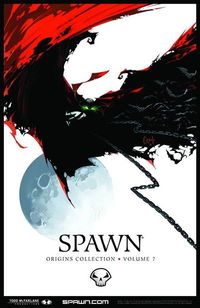 In my case, it was Spawn, who I'd had in my portfolio since high school. So I figured they'd have enough curiosity to at least get a couple of issues before going, "Ah, we don't like it." So I knew that there'd be at least a fair reception coming out of the gate, if you will. Now, to the magnitude that we got out? I wouldn't have guessed that one. And the reason was, if we get past some of the creative here, in terms of some of the financials, we were getting paid a page rate, and then maybe there was a royalty that went with the book based on sales, but it was fractional stuff.
In my case, it was Spawn, who I'd had in my portfolio since high school. So I figured they'd have enough curiosity to at least get a couple of issues before going, "Ah, we don't like it." So I knew that there'd be at least a fair reception coming out of the gate, if you will. Now, to the magnitude that we got out? I wouldn't have guessed that one. And the reason was, if we get past some of the creative here, in terms of some of the financials, we were getting paid a page rate, and then maybe there was a royalty that went with the book based on sales, but it was fractional stuff.
And when we did the math, and we now owned our work and were getting everything, we arguably could have sold one thirtieth of what we had done before and still made the same amount of money. So it wasn't like we had to maintain the exact sales, because if you're selling 100 copies and you only get one or two percent of that, then technically you can sell a lot less, and still make the same amount of money. Instead of getting one percent of 500,000 copies, we could get 100 percent of 5,000 copies, and it's the same amount.
What ended up working out for us right out of the gate and gave us a lot of momentum, so that 18 years later we're still talking about it, is that there wasn't really a noticeable drop in the number of books that people wanted. We were selling about the same that we were before, and we were getting the lion's share of the finances, so this thing actually got a lot of momentum and we had the financial wherewithal to get ourselves through the end times, when fans decided they don't want as much or the economy shifts or whatever else.
Fast forward a decade or so since that happened, and people started abandoning comic shops and we weren't selling as much, but because most of us were able to pocket a few extra dollars, we were able to still do what it was that we that liked, which is comic books. We can put out the products, and be less concerned about whether we can pay the bills, like we once did when we were starving artists.
TFAW.com: What was your original creative vision for Image?
 TMc: We wanted a place that would present an option to the creative community–that if you didn't like the big two, there were other options. They liked to make it seem like if you don't work for Marvel or DC, then you don't have a hope in hell. And arguably, they're a lot more right today than they were back then. Dark Horse was doing pretty well, and there had been some moderate success with small press like Pacific Comics.
TMc: We wanted a place that would present an option to the creative community–that if you didn't like the big two, there were other options. They liked to make it seem like if you don't work for Marvel or DC, then you don't have a hope in hell. And arguably, they're a lot more right today than they were back then. Dark Horse was doing pretty well, and there had been some moderate success with small press like Pacific Comics.
But then Image came along and said hey, you can now actually sell as many copies as you did there [at Marvel and DC], so if you have that creative itch, there's a safe haven for you. And 18 years later, that deal is still applicable. If you've got an idea and you're willing to put your own blood and sweat and tears and your own money behind it, then go ahead. We'll publish it, you own it, and it's up to you to make it a success.
TFAW.com: So you're now the President of Image Comics?
TMc: Yeah, but it's a true partnership. We all have corporate titles, but we try to make any big decisions by majority rule.
TFAW.com: How do you think Image will evolve over the next 18 years?
TMc: I think the biggest piece of the equation is whether the business model needs to be updated, based upon the wants and the needs and the dynamics of the industry in and of itself. The deal right now is, you come in and bring us your book, and then we publish it and you own it, but the thing that keeps some creators from doing that is, it's about a four- or five-month gap between doing your first book, so it's awhile before the payment for that book's sales will come into your lap.
Sadly, a lot of "starving artists" can't afford to live without any income for five months. So they're willing to say, "We don't want to own all of it, we'll give you a piece of it, if you give us some kind of stake in it and pay us a page rate." They're willing to give up something to get something. I always try to talk them out of it and say, "Don't let three or four months of money be what possibly makes the difference in your life," but I only get to be the father of my kids. And they get to do what they want to do, and we're not even sort of set up for that, so a lot of times they'll end up going to some of our competitors, who'll say "Cool! We'll take your property!"
 We weren't built on that principle, but sometimes we lose some pretty good books because of that, so there have been some ongoing conversations of maybe we need to have two or three options on the menu for somebody who comes in the door, and say, based on your personality and personal situation, you basically choose the deal from Image Comics that best suits you. We've had a one-of-a-kind deal that we haven't really altered. So that would be my guess, that we might come up with a little more variety, to offer little more flexibility to some of the people who come walking through the door.
We weren't built on that principle, but sometimes we lose some pretty good books because of that, so there have been some ongoing conversations of maybe we need to have two or three options on the menu for somebody who comes in the door, and say, based on your personality and personal situation, you basically choose the deal from Image Comics that best suits you. We've had a one-of-a-kind deal that we haven't really altered. So that would be my guess, that we might come up with a little more variety, to offer little more flexibility to some of the people who come walking through the door.
TFAW.com: Switching gears, with Spawn: Endgame, there's a new Spawn, Jim Downing. What made you decide to introduce a new Spawn?
TMc: The comic book industry had been sagging a little bit, so I was trying to add a little kick start to something that had been around. I felt that if I can bring in somebody who was tied to this power, but who reacts slightly different to it, then it allows me to add new elements that could add a creative twist on the existing guy.
At some point, you're a slave to your own history. I'm just trying to have a little bit of fun with it. The first Spawn, the Al Simmons Spawn, was always sort of reluctant to do what he was doing, and I was interested in pushing the Jim Downing character into someone who was actually going to embrace it and sort of go, "This is kind of cool!" We've got a storyline that begins after issue #200 that's him becoming a media darling. Him personally, not him as Spawn, because he's been walking around and he has this power that he doesn't really understand; when he touches people, he cures them. He's a bit of a faith healer, if you will.
He's gonna become a celeb, and paparazzi are going to follow him, and he's gonna sort of start digging it, being a rock n' roll star, if you will, but it's going to go counter to what he does as Spawn, so he's gonna almost be living a split personality without him understanding that he's doing it. Sort of like a rock n' roller gone wrong, he becomes addicted to a certain kind of lifestyle, and this is the opposite of what the first guy was–he never embraced it. The question becomes, how do you keep those two lives separate? The one where you're not the nicest guy on the block, and the other one, who the entire country thinks is the next Messiah?
 TFAW.com: So part of the mystery of Jim's identity was answered in Endgame–you find out who he was, but not exactly how he got to where he is now. Will that be answered any time soon?
TFAW.com: So part of the mystery of Jim's identity was answered in Endgame–you find out who he was, but not exactly how he got to where he is now. Will that be answered any time soon?
TMc: We've got a couple of issues post-#200 where he's going to get another piece of the puzzle. In the next issue, he's gonna get close to that. Eventually, we'll flesh out exactly why he's patient 47, why he's the 47th one, what his background was before he became the patient, what his connection is to the original, Al Simmons Spawn, why he appeared in issue #3 and all those other ones, and tie it all up, so all the continuity makes sense, going back to issue #3.
TFAW.com: I saw that Wanda has made an appearance, and Clown is still a major part of the book. Are any other past characters going to be included going forward?
TMc: Yep! We have the Freak, and he's gonna be a little more dominant as we go forward, then we're bringing back a couple of the classic bad guys, but we're also introducing a couple of new characters to the rogues' gallery. If we're going to reboot this thing, it doesn't necessarily mean that the only thing that's new is the Spawn character. But what it does do is, if you notice what's happening with Clown, is that he's tricking the new Spawn into thinking he's an ally, which never would have worked with the other Spawn because they knew each others' history too well. So there's a new Batman, but he thinks the Joker's okay. What's that dynamic, right? The bad guy has his own personal agenda, like he always does.
TFAW.com: It almost seems like the Joker is now his Alfred.
TMc: Yeah, right! That's it. There's a line in one of the latest issues where Jim says, "You're the only one I can trust," which is a fairly big line if you've been following the book for years.
TFAW.com: With Spawn #200, you and Greg Capullo are returning to the interior artwork. Are you penciling or inking?
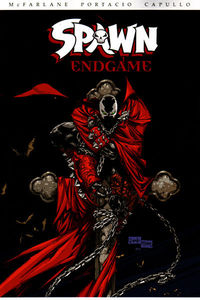 TMc: I'll be doing the majority of the penciling on that book.
TMc: I'll be doing the majority of the penciling on that book.
TFAW.com: Nice! Are you going to continue to write it, then?
TMc: I've got a new kid coming in named Will Carlton, who will be helping me with some of the plotting, so I can continue to feed my artist on a regular basis. I've got a new artist [Kudranski] who is already three issues into it–we've got issues #201, #202, and #203 all done already. I know the book has been delayed a little bit, but I'm hoping that once we get past #200, we'll have five or six issues sitting in the can and I'll be able to double-ship for two or three months, to help pick up some of that ground.
One of the big things that happened it that the new artist has a style that is dramatically different than mine, and it's gonna lead me into a storytelling mechanism that plays to his strengths. He's got more of a realistic look, instead of a big, American superhero look. His stuff has a bit of a movie quality to it. So that means I need to take all of the elements that work in Spawn, but give them a different veneer.
At the end of #200, all of the forces that we're all used to are going to go underground. It doesn't mean they won't rear their heads, but they're gonna be a little less obvious about it. They're gonna stop trying to have fights in the middle of Times Square. They're gonna do it in board meetings and in clandestine shadowy places. They're gonna be the mob, if you will, the demon mob, and you don't want to do it in broad daylight if you can.
TFAW.com: So they'll withdraw from the public eye.
TMc: Yes, but all of the motivations are still there. They'll just be a little more clever about it.
TFAW.com: Do you plan to do any more penciling in the near future, or will it just be issue #200?
TMc: If my new artist gets into a groove, as weird as it is, my style would be disruptive to the flow of that. So my guess would be if I get the itch to do some penciling, it will be to give Greg [Capullo] a break on Haunt or do a miniseries or something like that, and let Spawn do what it's doing.
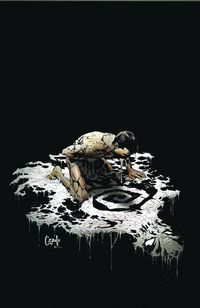 TFAW.com: I've been enjoying Haunt, and the relationship between the brothers, Kurt and Daniel. Was that purely a collaboration between you and Robert Kirkman? How did that come about?
TFAW.com: I've been enjoying Haunt, and the relationship between the brothers, Kurt and Daniel. Was that purely a collaboration between you and Robert Kirkman? How did that come about?
TMc: It took a long time, from when we first said we were going to do something until it finally came out. We were trying to fill in some of those story hooks with some big ideas. Robert's done a really good job of filling in some of the missing components. Every comic kind of takes on a life of its own, once you get going. You have a couple big ideas, and all of the sudden the story starts putting you in directions where you go, "Oh, that that makes sense."
When I had him put in the story, Robert was willing to listen, and he even came out to the office early on in the process and was showing me some different kind of mask that he thought would look cool. We've both been at it long enough that we won't take offense if the other guy wants to give us a tip about the other guy's supposed number-one skill. He's the writer, but if I have a story element, he'll listen, and if he has a visual idea, my ears perk up too.
TFAW.com: It sounds like a good partnership.
TMc: Yeah! The question is, will it go for 100 issues, or will we get mad at each other by issue #9, right? So far, he's distracted with his Walking Dead TV show, so that will bode well for us. We shouldn't get in too many arguments, because he'll be too distracted.
TFAW.com: Over at Image United, Al Simmons has been reborn as Omega Spawn. Why, and what is his purpose now?
TMc: Well let me go on record as saying, it's not quite the Al Simmons, and we'll get to that. I thought, "Come on, that's too comic-booky. He can't just kill himself, and then four issues later, he's back." I mean, I hate that stuff. But we're dealing with comics, so we can write our way around anything. His essence has passed through a couple places and left an imprint on a couple things, and this is one of them. But at the end of this, I'm not stuck with [the idea], that that has to be my Al at the end of it. Robert is going to write a couple pages about that in issue #200.
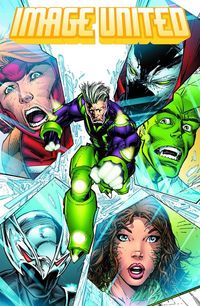 TFAW.com: What was it like working with some of the original Image founders on Image United?
TFAW.com: What was it like working with some of the original Image founders on Image United?
TMc: It was cool, and again, it sort of reminded me of how good each one of those guys is, within the confines of his own style. You don't necessarily have to like our styles. It's just an appreciation, like, "That's right–this is why Erik [Larsen] is good, and why Rob [Liefeld] is good, and why Marc [Silvestri] is good." Each of us has his own strength that the other guys might not be as good at, but they're better at other things, so when you're looking at a page that has all of us–I was working on a two-page spread today–you just go, "Wow, look at that! That's kind of cool!"
I thought at the beginning that it might be a little more of a tough sell, artistically. Our art is somewhat different and so is our interpretation of artwork, but it's actually gone okay. Of course, the biggest thing is just continuing to get it out; I've been the guy holding it up. Everyone else has been doing a good job, and I've been the barnacle.
TFAW.com: What are your relationships like with each other, after all these years?
TMc: Very good! Even the relationship I have with Rob has healed dramatically from when we had our personal differences early on, when he was a partner. Maybe it's just a sign of us getting mature and old and whatever. I think the piece of the puzzle that any of us misses the most is the long nights in the hotel room where we would just sit around and hang out with each other.
At the end of the day, aside from any creative or business differences we may have, we actually enjoy each others' company. We actually like each other. Every time we're together–we'll do it again, when San Diego comes up–we'll sit there and say, like we always do, "We should do this more often." We don't have the luxury of doing that, because our lives have gotten so much more complicated.
TFAW.com: How do you feel about that state of the comic book industry today?
TMc: Obviously, when you take a look at the sales, and the enthusiasm, and the number of consumers, which isn't there, there's a bit of a myopia in terms of buying habits, of consumers and store owners, so that even when you've got a book like Haunt that has Kirkman and Greg Capullo and Todd McFarlane, and it sells at a rate that is about as good as the fortieth best-selling Marvel book. But if we were doing X-Men or something, that wouldn't be true.
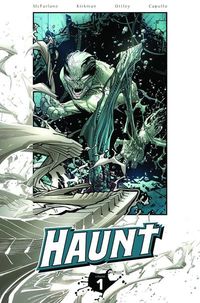 It's interesting that it's not about quality, per se, and maybe I'm just patting myself on the back, but it's not about quality at that point. It's about whether you're working on a character that's owned by the big two. The downside of that is, there are a lot of kids coming up who are convinced that if they aren't working for the big two, there's no other option. At least when we did it, we did it at a time where we would sell gobs of comic books. That gave us a lot of personal freedom, creatively, to keep going.
It's interesting that it's not about quality, per se, and maybe I'm just patting myself on the back, but it's not about quality at that point. It's about whether you're working on a character that's owned by the big two. The downside of that is, there are a lot of kids coming up who are convinced that if they aren't working for the big two, there's no other option. At least when we did it, we did it at a time where we would sell gobs of comic books. That gave us a lot of personal freedom, creatively, to keep going.
In an interesting way, it almost goes backwards. These artists are doing their own independent books, and then when they get noticed, they say, "Good, now I can go do Captain America!" We did it the other direction. It's an interesting dynamic out there right now–it's a little frustrating, at times, but I don't get to control it. That's why I do all the other things I do outside of comics.
TFAW.com: It seems like the comic book industry is relying on brand-name awareness, with established characters like Superman and Wonder Woman and the rest.
TMc: They are, but even those–it's not like Superman and Spider-Man sales have doubled or tripled since the movies came out. It's quite the opposite, actually. Sales continue to go down. So you make three Spider-Man movies and you're selling a fraction of what you sold when I was on the book, when there were no Spider-Man movies. So there's still something dysfunctional going on in that industry.
TFAW.com: What do you think comic book publishers need to do to attract new readers?
TMc: I don't know. There's the million-dollar question. And you hit it–you gotta get new readers. When someone gets old enough, or gets poor enough and can't afford it, or gets divorced, or gets hit by a bus and is now dead, and can't buy any more comics, how are we replacing that person? And the answer is, if you look at the numbers, we aren't. There is the big question.
 And part of it is the dynamics of the comic book industry as a whole, with these little stores off in the corner. You have to want to come to a comic store to get a comic book, for the most part. I mean, we'll see what happens in five or ten years with digital downloads and stuff like that, so it comes directly to your house.
And part of it is the dynamics of the comic book industry as a whole, with these little stores off in the corner. You have to want to come to a comic store to get a comic book, for the most part. I mean, we'll see what happens in five or ten years with digital downloads and stuff like that, so it comes directly to your house.
What we haven't seen, which is what they thought was gonna happen, is people who go to a Spider-Man movie don't get up the next day and think, "You know, I'm 22 years old, I've never collected comic books, but that Spider-Man movie was awesome. By gosh, I'm gonna get in my car and I'm gonna drive around until I find a comic book store and I'm gonna start collecting comics." It doesn't mean that. It means you liked the movie. That's all it means.
It's just like going to see a movie like The Departed. Wow, it was good, but I don't need the ball cap and the T-shirt after that. I don't need the novel. I just watched the movie, and hey, what's coming out next week? Maybe they're selling more toys of those guys. But it's not necessarily giving a spike to any one of those comics' sales, or the industry as a whole. As much as people would like to think that, the facts and the economics are not there.
TFAW.com: What has Image's experience with digital distribution been like so far?
TMc: Nominal. Some guys have tried it, and they're bugging me to do it more. I think we're in negotiations to do something as a company. There's an entire library. Something is going to happen with that, but I think the tipping point is a couple of things. One, someone has to say the issue is online first, and then we print it later. Now we're doing it backwards a bit. The reason I say that is, this way you're designing pages for the comic book and then you have to cut them up to put them on the phone.
I mean now with the iPad, it becomes a little easier because it's about the size of a comic book page and that's cool, but short of having the iPad, there's an image size you're going toward, and I think it's easier to design for that screen size, and then glue it together as a comic book out of it, than the other way around. So that's one of my hesitations about jumping into it too big. I don't think we should do it the way everyone else is, which is, "Here's my library, cut it up and let me sell it." Now there's money to be had there, but nobody's telling me they're getting rich and getting big audiences.
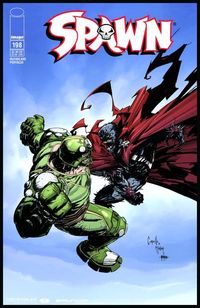 I'm always curious and think, surely there's something more we can do here. Something else that's more interesting, a little more innovative than taking what we've always done and chopping it up on the screen. We need to figure out what that is. I've got a couple ideas I'm working on. I don't know if they'll have even one iota of impact, but it's worth an effort.
I'm always curious and think, surely there's something more we can do here. Something else that's more interesting, a little more innovative than taking what we've always done and chopping it up on the screen. We need to figure out what that is. I've got a couple ideas I'm working on. I don't know if they'll have even one iota of impact, but it's worth an effort.
TFAW.com: So McFarlane Toys, and specifically the Spawn toys, have been credited with changing the face of action figures. How do you feel about that?
TMc: The intent at the very beginning was, if someone else can come along and take a page out of my playbook and make an even better toy than I can conceive of, the winner is going to be the consumer. Because at the end, the consumer is going to have cooler-looking toys. And I've already seen that.
When I started, there was maybe one or two toys a year that I was jealous of: "Darn, I wish I had done that one." And now, as time has gone by, there are literally dozens and dozens and dozens that make me say, "Wow, that's good!" So the bar has gone up. If we had something to do with that–which I believe we did–that's cool. It just puts me on guard to do better, because people are creative in a lot of corners, and I can't assume that we're on the cutting edge at all times, because there are too many talented people in the world.
TFAW.com: You've done musicians, athletes, video game characters, comic book characters–are there any other areas you want to expand into?
TMc: I don't really make the decisions based on genre, per se. I usually make the decisions based on whether I think there's enough people who will pick it up and buy it to allow us to pay for the research and development of making this product. My job isn't to tell people what they want; my job is to see what people are hungry for and then try to get in those places. I just sort of sit back and say, "Where are the consumers?" and try and get in those spots. I don't say, "Hey, I'm over here, come over and see me!"
TFAW.com: Do you have any other projects coming up that you're excited about?
 TMc: At San Diego, I'm doing a panel where we're announcing the advent of this video game we've been working on. We're been working on a game both for a console and for an MMO version. I just finished co-directing the trailer for it, so we're going to unveil the trailer at the San Diego convention. All the of main visionaries for the game will be at the panel, and then we're gonna say, "By the way, here's a little teaser trailer. By the way, this is coming out next year, and here's a date, and boom boom boom!"
TMc: At San Diego, I'm doing a panel where we're announcing the advent of this video game we've been working on. We're been working on a game both for a console and for an MMO version. I just finished co-directing the trailer for it, so we're going to unveil the trailer at the San Diego convention. All the of main visionaries for the game will be at the panel, and then we're gonna say, "By the way, here's a little teaser trailer. By the way, this is coming out next year, and here's a date, and boom boom boom!"
TFAW.com: What's the name of the game? Or is it under wraps?
TMc: Yeah, we have an internal one, but I think part of the unveiling is the actual name of it. Distribution will be going through one of the major publishers. They'll be there with their booth showing it off, too.
TFAW.com: Awesome! Well, thank you so much, I really enjoyed talking to you.
TMc: Thanks!
Make sure to check out all of our Image Month interviews in July, and check out their booth at San Diego Comic-Con this year–looks like some really cool stuff is coming up. You can also find Spawn, Haunt, and Image United comics right here on our site.
Do you remember when Spider-Man #1 came out? What do you think about the comic book industry today? Post your comments below!

